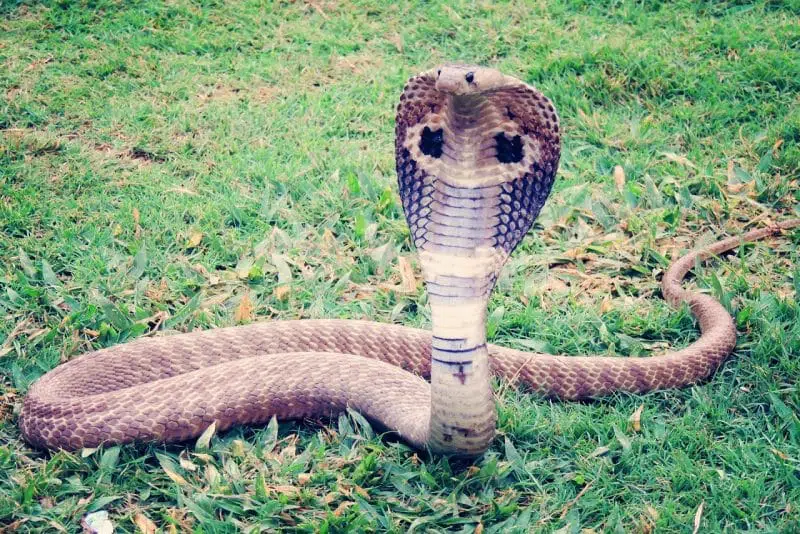Welcome to exploring the differences between a cobra vs. hippo.
When it comes to the animal kingdom, there are many fascinating creatures with unique traits and behaviors. Two such animals that are vastly different from each other but equally intriguing are the cobra and the hippo.
The cobra is a venomous snake known for its iconic hood and deadly bite, while the hippo is a massive semi-aquatic mammal known for its size, strength, and territorial nature.
Let’s explore the distinctions and similarities among these creatures, their distinct traits, and their behaviors in their natural habitats.
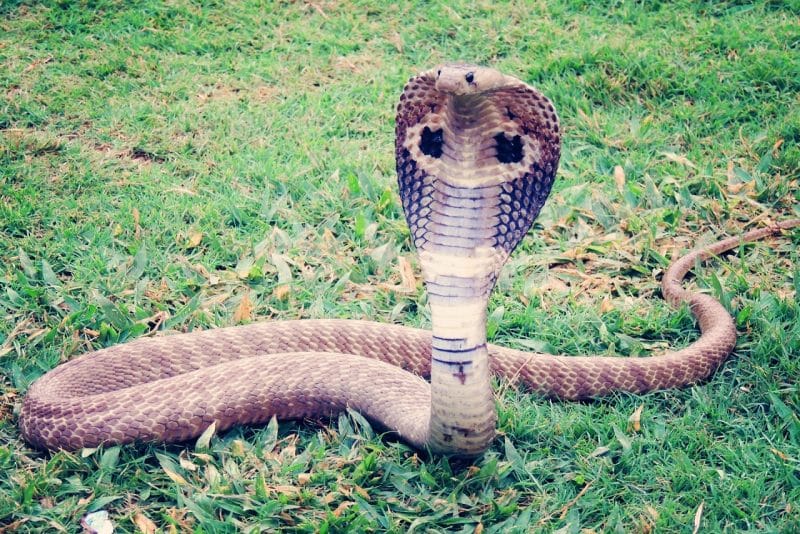
Want to slither ahead? Click below
Overview Of Cobra And Hippo
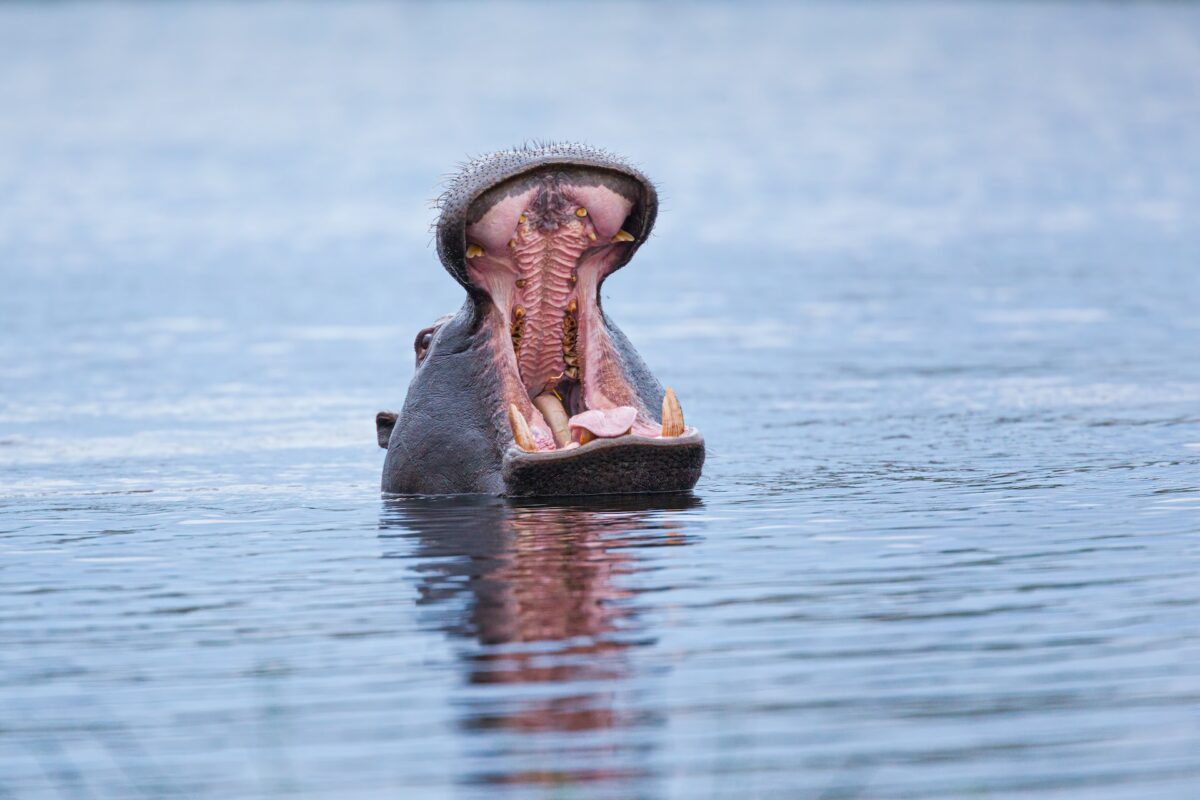
- Description
The cobra is a venomous snake native to the Middle East and South Asia. It can also find in various regions of Africa and India. Cobras have long, slender bodies that are usually black or brown, with a distinctive hood on their head. Their maximum length can be 15 feet (4.5 meters), and they can weigh as much as 60 pounds (27 kilograms). The cobra’s venom is highly potent and deadly if not treated immediately.
The hippopotamus is an enormous mammal found in sub-Saharan Africa. It has a bulky gray body with short legs, four toes on each foot, small ears, and eyes on the sides of its head. The hippo can reach up to 16 feet (4.9 meters) long and weigh up to 4 tons (3 metric tons). Its hide is thick enough to protect it from all but the most powerful predators, such as lions and crocodiles.
- Habitat
Cobras are usually found in tropical climates such as rainforests or grasslands, where they use tree hollows or old burrows for daily shelter. They hunt at night when they can easily ambush their prey with their powerful venomous bite. Cobras often live near human settlements as they snack on rodents inhabiting these areas.
Hippos prefer warm climates near large bodies of water like rivers and lakes, where they spend most of their time submerged in shallow waters during the day to cool off from the sun’s heat; they come out onto land at night to graze on grasses or browse trees along the shoreline. They also build communal pools known as wallows that provide refuge habitats for them during drought or extreme temperatures.
- Diet
Cobras are carnivores, meaning they feed mainly on other animals, such as rodents, birds, lizards, frogs, and snakes! Their diet consists mainly of insects but includes other warm-blooded creatures, providing them with essential proteins for energy production and growth.
Check out What Do Cobras Eat? 11+ Foods in their Diets.
Being herbivorous, hippos primarily feed on grasses. Still, they will also eat aquatic plants if food is scarce or when there’s competition for resources among herbivore species living close to each other. On average, a hippo consumes around 37 pounds (17 kilograms) of vegetation daily!
Learn more about What do hippos eat?
Comparison Of Physical Characteristics
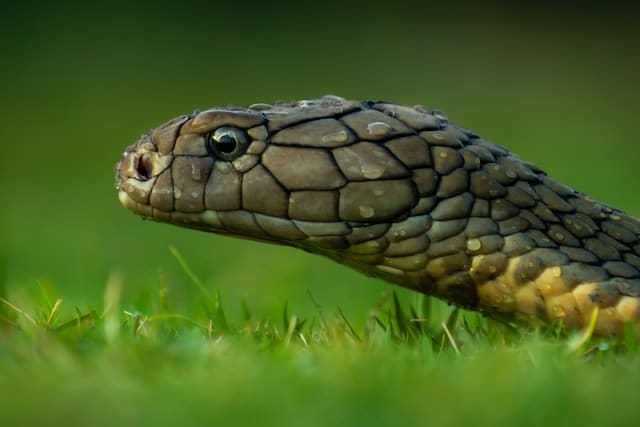
- Size
Cobras are relatively small snakes ranging from two to six feet in length. In contrast, hippos are among the largest land animals and can grow up to 14 feet long and weigh up to 5,000 pounds.
- Color
Cobras have instead striking coloring due to their ability to camouflage. Depending on their environment, cobras may exhibit different shades of brown, yellowish-green, or black. On the other hand, hippos have a darker grayish-brown color with white markings around the eyes and ears.
- Shape
Cobras have an elongated body shape with a triangular head. They can spread their large hoods as a defensive mechanism when facing a threat.
On the other hand, hippos have massive barrel-shaped bodies with short necks and large heads. They also possess two enormous ivory tusks used for defense and digging.
- Skin Texture
The skin texture of cobras is smooth and glossy, while hippos have thick wrinkly skin covered in bristly hair all over their bodies which helps protect them against parasites.
- Head Shape
Cobras have a distinctly triangular head which helps them sense vibrations in the air for hunting prey. Meanwhile, hippos have round heads but with distinctive ridges on top that increase surface area for muscle attachment so that they can lift their heads quickly out of the water if needed to defend themselves from danger.
Check out Amazing Facts About the Hippopotamus.
A Comprehensive Analysis Of Contrasts In Behavior And Human Interaction Between Cobras And Hippos
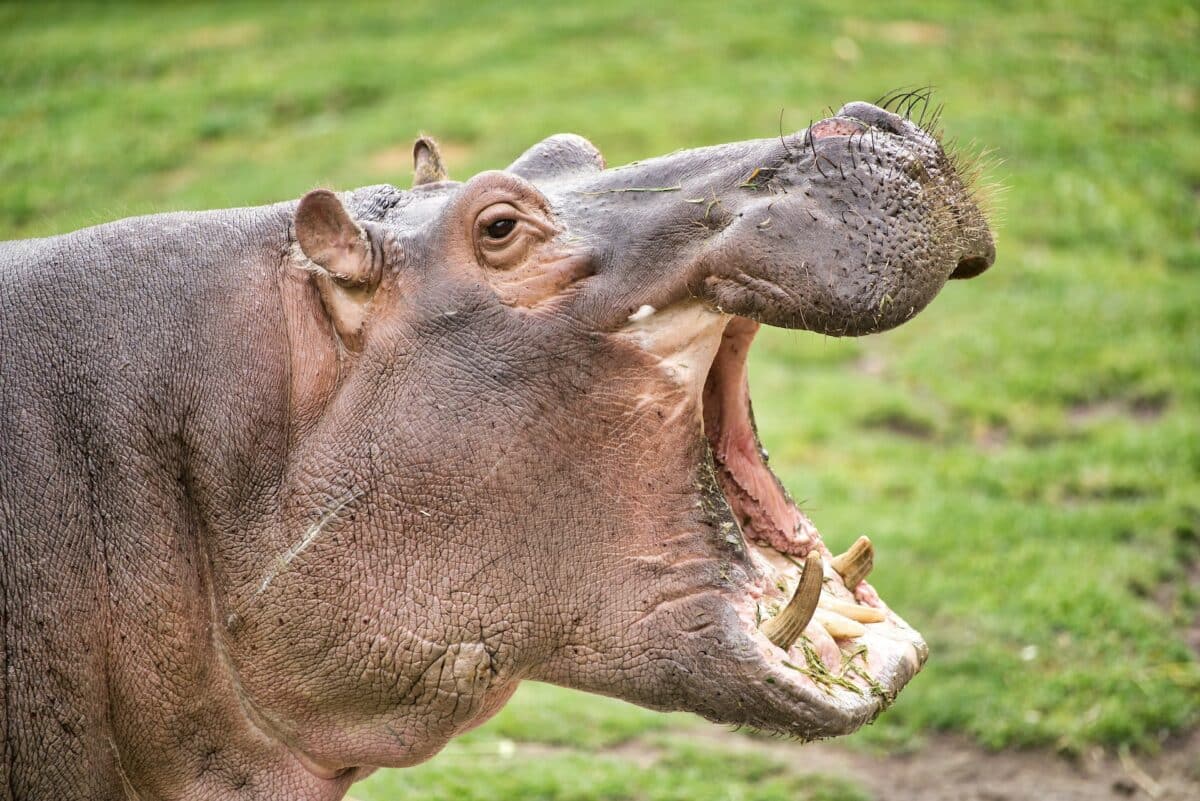
Regarding differences in behavior and interaction with humans, cobras, and hippos are very different species. Notorious for their hostile temperament, cobras may attack humans if they perceive a threat.
On the other hand, hippos typically avoid contact with people and only become aggressive when provoked or when their young are in danger.
Differences In Venomousness – Which Is More Dangerous And Why?
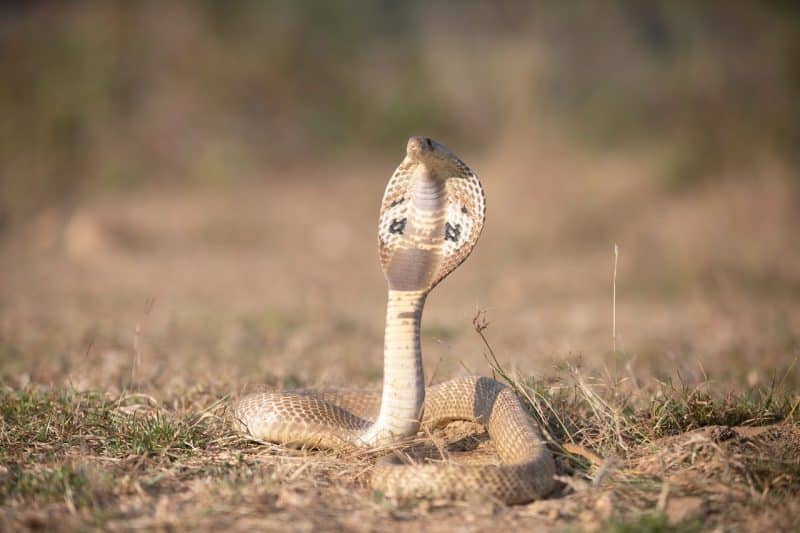
Regarding venomousness, both cobras and hippos can cause serious harm to humans. However, cobras are much more dangerous due to their ability to inject potent venom into their victims through their fangs. Cobras’ venom contains neurotoxins that act quickly on nerve cells, resulting in paralysis or death depending on the amount of venom injected.
Hippos, on the other hand, do not possess venomous fangs like cobras do. Their tusks pose a more significant threat if they choose to attack humans, as they can cause severe lacerations that could be deadly if untreated.
Specifics On How To Identify A Cobra Or Hippo In The Wild
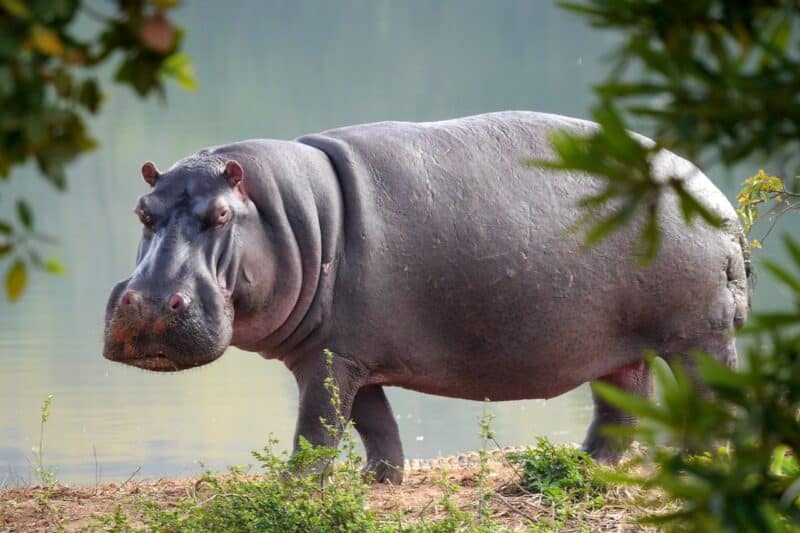
Identifying a Cobra or Hippo in the Wild
If you’re out in the wild and come across one of these majestic creatures, knowing how to identify them is essential.
Cobras are easily recognizable by their long, thin bodies and distinctive hood. They have various colors, including black, yellow, or brown, with different patterns. They typically attain a length of 3 meters and weigh approximately 10 kilograms.
Hippos are much larger than cobras and have short legs, large heads and eyes, and small ears. Their skin is typically grayish-brown, with some areas slightly pinker than others.
Check out Cobra Facts, Diet & Habitat.
How To React If You Encounter A Cobra Or Hippo In The Wild
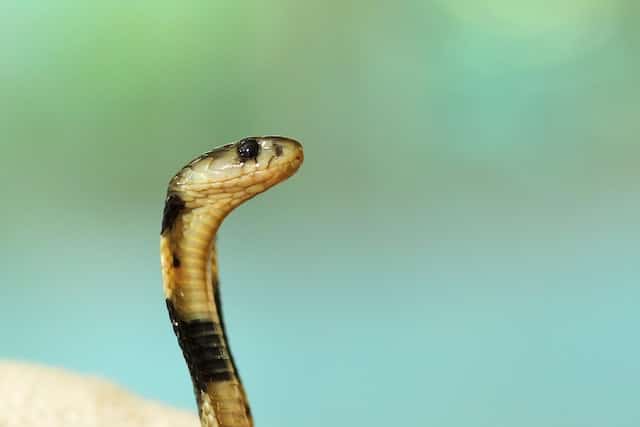
When encountering a Cobra or Hippo in the wild, it’s essential to remain calm and move away slowly but not run, as this could provoke an attack.
- If you spot a Cobra coil itself up into its characteristic hood, stay back as it prepares to strike.
- Conversely, if you encounter a Hippo, keep your distance as they are known to be quite aggressive when feeling threatened or provoked.
In both cases, it is suggested to refrain from making loud noises or sudden movements that may startle either animal, as this could cause them to become more agitated.
Wrapping Up with Cobra vs. Hippo
For those fascinated by the differences between a Cobra and Hippo, there’s no end to engaging in exciting wildlife exploration. Understanding their behaviors, habitats, diets, and unique aspects will offer abundant knowledge to appreciate these creatures. It is essential to understand that without one species playing its part in natural harmony, it can cause an imbalance—making our world less of a safe and beautiful place.
Through this guideline, we have discovered how important it is to preserve these animals’ homes and have delightfully explored some fun facts about what makes them distinctly different. Educating yourself further on the many wonders of animals increases your awareness, facilitates conservation efforts, and allows us all to marvel at the incredible beauty of nature. An adventure awaits! So stay curious, keep learning, and never stop exploring!
Thanks for following along with us! Next up, Eagle vs. Cobra, The Tiger vs. The Jaguar, and Lion Vs. Hippo.
- Watch Hippo Mother Chases Crocodiles To Protect Her Dead Child - April 15, 2024
- Watch Elephants Ask Rescuer To Play Piano - April 12, 2024
- Top Techniques To Cleaning Up Dog Vomit - April 11, 2024

